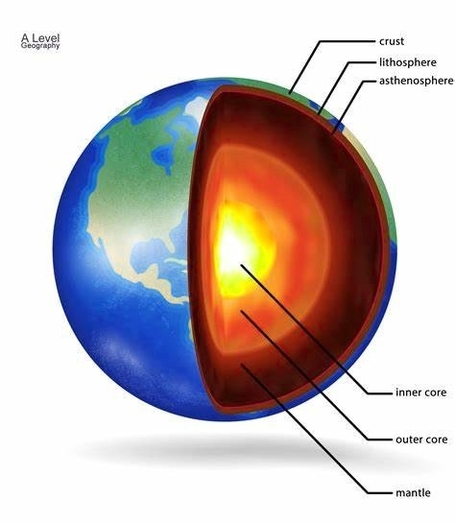
Earth is composed of four distinct layers: the inner core, the outer core, the mantle, and the crust . The inner core is a solid metal ball made mostly of iron and nickel, with a radius of 1,220 kilometers (758 miles) . It spins a bit faster than the rest of the planet and is intensely hot, with temperatures sizzling at 5,400° Celsius (9,800° Fahrenheit) . The outer core is also made from iron and nickel, but in liquid form. It is heated largely by the radioactive decay of the elements uranium and thorium, and churns in huge, turbulent currents that generate electrical currents, which in turn generate Earth’s magnetic field . The mantle is Earth’s thickest layer, at close to 3,000 kilometers (1,865 miles) thick, and is semi-solid . The crust is the outermost layer of Earth, and is the thinnest layer, ranging from 5 to 70 kilometers (3 to 44 miles) thick .
The Earth’s layers are formed, heated, and moved by various forces . The inner core is believed to be formed by the solidification of the outer core, while the outer core is believed to be formed by the cooling of the Earth’s original molten state . The mantle is heated by the residual heat from the Earth’s formation, as well as by the decay of radioactive isotopes . The crust is formed by the cooling of the Earth’s original molten state, and is broken into tectonic plates that move around the surface of the Earth .
The Earth’s layers have different physical and chemical properties, which affect how they behave and interact with each other . For example, the mantle is denser than the crust, and so the crust “floats” on top of the mantle . The different layers also have different temperatures and pressures, which affect the behavior of the materials within them .
In summary, the Earth is composed of four distinct layers: the inner core, the outer core, the mantle,
